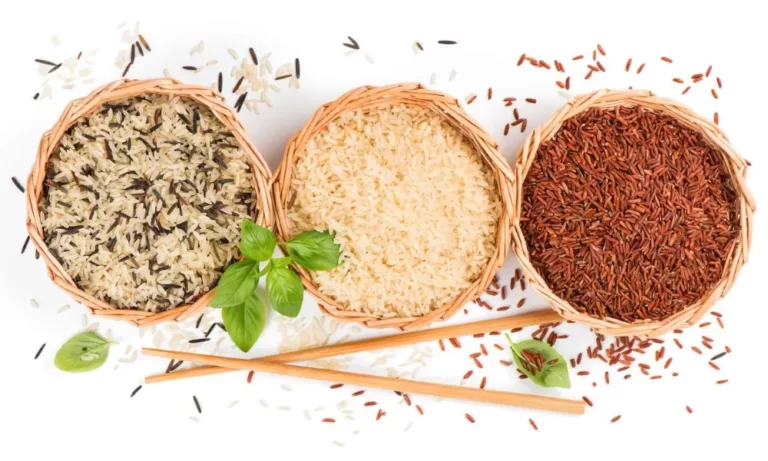Cooking rice to perfection is an art that can be achieved by understanding the importance of cooking times. Whether you’re a seasoned cook or a beginner, knowing how to master cooking times in your rice cooker will elevate your rice dishes to a whole new level. In this article, we will explore the factors that affect cooking times, different types of rice and their respective cooking times, tips for perfectly cooked rice, how to adjust cooking time in a rice cooker, common mistakes to avoid, and the cleaning and maintenance of a rice cooker. By the end of this article, you will have all the knowledge you need to create a fluffy, delicious bowl of rice every time.
The Importance of Perfectly Cooked Rice
Perfectly cooked rice is a vital component of many cuisines around the world. Whether it’s a comforting bowl of steamed white rice, a flavorful serving of basmati rice, or a hearty plate of fried rice, the texture and taste of the rice can significantly impact the overall dish. Undercooked rice can be hard and crunchy, while overcooked rice becomes mushy and lacks texture. Achieving the perfect balance of tender grains with a slightly firm bite is the key to creating memorable rice-based meals.
Understanding Cooking Times
Cooking times for rice depend on various factors that influence the final result. The primary determinant is the water-to-rice ratio. The amount of water used in proportion to the rice affects the cooking time and the desired texture. Additionally, different rice types and the quality of the grains can also affect cooking times. Some types of rice require more water and longer cooking times, while others may be quicker to cook.
Factors Affecting Cooking Times
Several factors can impact the cooking time of rice. Heat intensity and consistency play a crucial role in achieving optimal results. Rice cookers with varying power settings may require adjustments in cooking times to ensure even cooking. Altitude and atmospheric pressure also affect the boiling point of water, which can alter the cooking time. Additionally, different rice cooker models may have variations in performance, requiring attention to specific cooking instructions.
Types of Rice and Their Cooking Times
Different rice varieties have distinct cooking times. Short-grain, medium-grain, and long-grain rice each have their own characteristics and ideal cooking methods. Basmati, jasmine, brown, and wild rice are also popular choices, each with its own unique flavor profiles and cooking requirements. It is essential to understand these variations to achieve perfectly cooked rice based on the type you are using.
Determining the Right Cooking Time
Determining the right cooking time is crucial to achieving perfectly cooked rice. One effective way is to test the rice for doneness by taking a small taste or checking the texture and moisture levels. Adjustments can be made based on personal preferences for softer or firmer rice. Experimenting with cooking times and making small adjustments will help you find your desired outcome.
Tips for Perfectly Cooked Rice
To ensure consistently perfect rice, follow these tips:
Wash the rice thoroughly to remove excess starch.
Soak the rice before cooking to achieve a desirable texture.
Measure the water-to-rice ratio accurately.
Consider adding salt, oil, or other flavorings for enhanced taste.
Allow the cooked rice to rest and fluff it gently with a fork before serving.
How to Adjust Cooking Time in a Rice Cooker
Rice cookers offer convenience and precision when it comes to cooking rice. Understanding the different settings and options available in your rice cooker is crucial for achieving desired results. By adjusting the cooking time, you can fine-tune the texture and doneness of the rice. It is recommended to refer to the manufacturer’s instructions for specific guidance on adjusting cooking times based on your preferences.
Common Mistakes to Avoid
While cooking rice in a rice cooker is relatively straightforward, certain mistakes can affect the outcome. Avoid these common errors to ensure perfectly cooked rice every time:
Overfilling the rice cooker, which can lead to uneven cooking and spillage.
Lifting the lid prematurely, which can disrupt the cooking process and result in undercooked rice.
Incorrectly measuring the water, as too much or too little can affect the final texture.
Ignoring the manufacturer’s instructions, as each rice cooker model may have specific requirements for optimal results.
Cleaning and Maintenance of a Rice Cooker
Proper cleaning and maintenance of your rice cooker ensure its longevity and continued functionality. After each use, allow the rice cooker to cool before cleaning. Remove any leftover rice and rinse the cooking pot with warm water. For stubborn stains or food residue, use a mild detergent or vinegar solution to clean the pot. Regularly clean the exterior of the rice cooker and ensure it is completely dry before storing.
Conclusion
Mastering the art of perfect rice begins with understanding the cooking times involved. By considering factors such as water-to-rice ratio, rice types, and cooking adjustments, you can achieve consistently delicious and fluffy rice with your rice cooker. Avoiding common mistakes and maintaining your rice cooker properly will ensure its longevity and optimal performance. So, embrace the art of perfect rice and elevate your culinary creations to new heights.




